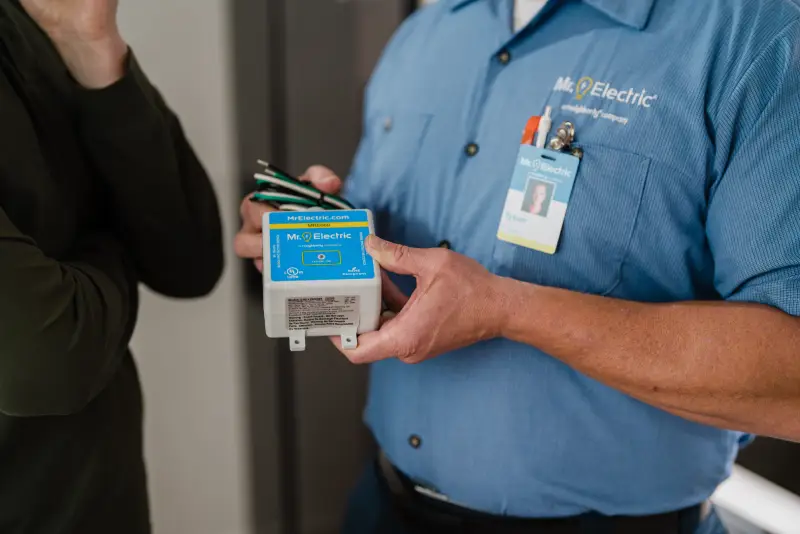
Mr. Electric explains how surge protectors safeguard electronics from voltage spikes.
|
Recommended by the National Fire Protection Association and the Institute for Business and Home Safety, surge protectors safeguard electrical devices in your home in the event of power spikes and surges. But how does a surge protector keep your electrical devices safe when all that amped-up energy attacks? The science behind the technology isn’t as hard to understand as you might think.
How Surge Protectors Work
“When a sudden increase in voltage occurs, such as from a lightning strike or damage to a power line, a surge protector detects the excess current and safely diverts it through the house’s grounding path.” A simple statement and it sounds great, but what does it mean? How does a surge protector know how to do this? To understand that, we just need to simplify a little terminology...
The Vagueness of Electrical Vocabulary
Understanding voltage and amperage can help you better grasp how surge protectors work:
- Voltage:
Using the analogy of water in a hose, voltage is the equivalent of electrical pressure.
- Amperage
Using the same analogy, amperage is the flow rate, or amount of fluid running through the hose.
Surge Protectors: Excising the Excess
Using our trusty hose analogy, applying too much pressure in a hose can eventually cause it to burst. In the situation of electrical excesses, however, rather than bursting, electrical lines and appliances burn up, or at the very least wear down over time. By diverting excess pressure in the hose (your home’s wires) surge protectors safeguard wiring and appliances. To accomplish this, they need the help of special components.
Managing the Pressure
How is all that pressure, or excess electrical energy, diverted? When the voltage reaches a certain point, surge protectors simply re-route that extra energy with the help of what is essentially a pressure-sensitive valve. With the correct voltage, current flows through as normal, but with a spike or surge, the device kicks in immediately and redirects the excess. Commonly used devices for managing this pressure in surge protectors include metal oxide varistors (MOV) and gas discharge arrestors, which allow electrical devices to continue operation while diverting excess energy to grounding wires.
Multi-Layered Protection is a Must
Due to the nature of surge protection devices, all three of the following surge protection types - or at least Type 2 and Type 3 devices - are needed for adequate protection:
- Type 1: Whole House Protection
Installed between the power lines in the street and your meter.
- Type 2: Whole House Protection
Installed between your meter and breaker box.
- Type 3: Point-of-Use
Smaller protectors at wall outlets where you plug in appliances.
Isn’t That Overkill?
No. A whole house surge protector can’t handle 100 percent of surges. A small amount of excess voltage can leak up to 15 percent. They also can’t handle surges within your home. They suppress surges from outside sources, such as utility company and transformer issues, but cannot protect against the myriad of surges happening inside your home from your appliances – when your A/C or fridge kicks on and off, for instance.
Only as Good as Your Grounding
Older homes with ungrounded outlets or homes with improper wiring and grounding will not be helped by a surge protector without the necessary upgrades. Even the best surge protector will fail if there is no proper escape route via grounding for excess electricity to go. If your home has grounding issues, have them addressed quickly, as wiring repair or upgrade costs will pale in comparison to replacing fried appliances.
Amped up about surge protection in your home? Contact Mr. Electric® for your free, in-home surge protection quote today.
